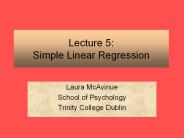Previous lecture - PowerPoint PPT Presentation
1 / 14
Title: Previous lecture
1
Previous lecture
- Block ciphers
- Modes of operations
- First assignment
- Hash functions
2
This lecture
- More on hash functions
- Digital signatures
- Message Authentication Codes
- Padding
3
Homepage for the course
- Reminder there is a homepage for the course at
http//www.nada.kth.se/marten/AC/2003 with a
mirror at http//students.mii.lu.lv/user/AC/2003 - This page contains the latest information on the
course - All lectures can be downloaded from this page
4
Hash functions
- A hash function is a function f0,1 ? 0,1n.
- Example Check sums in communication protocols
- Indices in databases
- One-way
- Given x, unfeasible to compute an v such that
H(v) x - Collision-free
- Unfeasible to find v1 and v2 such that v1 ? v2
and H(v1) H(v2)
5
Digital signatures
- Used to ensure authenticity.
- A digital signatures binds a document to a
person. - A person produces a digital signature using his
private key - The signature can be verified using the public
key.
6
How to sign a document d
- Compute the hash of d, v H(d).
- Perform a private key operation on v.
- The result is a digital signature.
- What happens if the hash function is not
collision free?
7
Use of a digital signature
Signer
Verifier
Document
Document
Signature generation
Signature
Signature verification
OK / not OK
Public key
Private key
8
Message Authentication Codes
- Digital signatures requires public/private keys
- The same functionality can be achived with
symmetric keys - Called MAC Message Authentication Code
- Signer and verifier uses the same key
- Question What are the advantages compared to
digital signatures? What are the disadvantages?
9
Two simple MACs
- Let Ekey, Dkey be a symmetric cipher, and let H
be a hash function. Let m be the message to MAC
and let k be the symmetric key. - First proposition Compute a hash of the document
and encrypt it - Ek(H(m))
- Second proposition Concatinate the message and
the key and compute the hash - H(m ? k)
10
Use of a MAC
Signer
Verifier
Document
Document
MAC generation
MAC
MAC verification
OK / not OK
Symmetric key
Symmetric key
11
Difference between MAC and digital signature
- If you can verify a MAC, you can also create it
- To prove the validity of a MAC to a third party,
you need to reveal the key. - Computing a MAC is (usually) must faster than
computing a digital signature - Important for devices with low computing power
12
Padding
- In public key cryptography, an adversary can try
to encrypt until he finds the correct message - This is a real problem when the number of
possible messages is low. (Yes/no, four-digit PIN
code, etc.) - Often encrypting a low number is dangerous.
- Without padding, the same clear text encrypts
into the same cipher text each time. - Padding adds random data to the clear text before
encryption
13
Padding, cont.
- (Artificial) example We want to encrypt yes or
no using a system for n bits. - Yes is encoded by 10
- No is encoded by 01
- Pad by adding (say) n 3 random bits
- Yes is encoded by 1b2b3bn 210
- No is encoded by 1b2b3bn 201
- To use test-encryption you need to try all 2n 3
combinations.
14
Standards for padding
- Standards important for interchange
- RSA Laboratories has defined several standards
for public key cryptography called PKCS - PKCS1 describes how to encrypt and sign using RSA






























